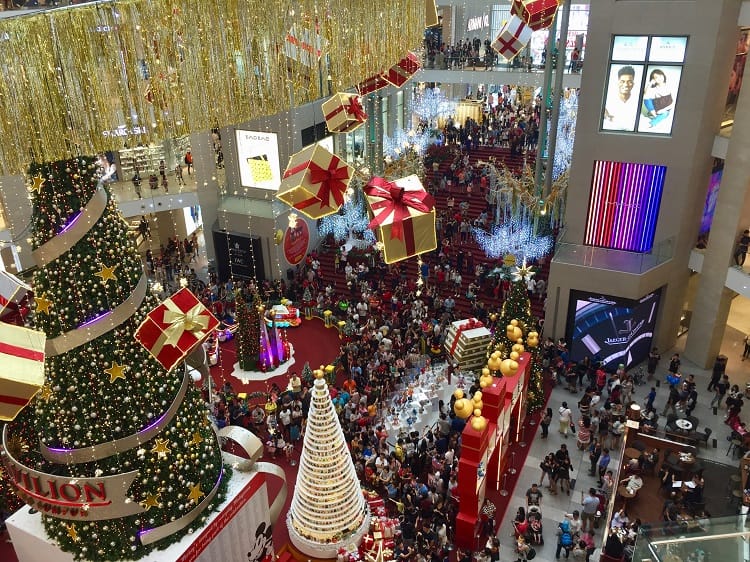Last Updated on October 28, 2024 by Ellen
Unlike many American malls, which are largely deserted and sometimes out of business, malls in Malaysia and Singapore are busy, popular places. Not only that, but there are many malls — sometimes there is a mall every few city blocks in cities like Kuala Lumpur.
The malls often aren’t just one or two or even three stories. Oh no. They’re four or five or six stories! All floors are loaded with retail. There are few empty storefronts – and if there is a vacancy, there’s usually a “coming soon” sign that announces a new retail shop about to open.
There are shoppers in many stores buying things — even high-end fashion retail like Bottega Veneta, Versace, Prada, Chanel, and more. How often do you see those brands open entire stores in an average American mall?
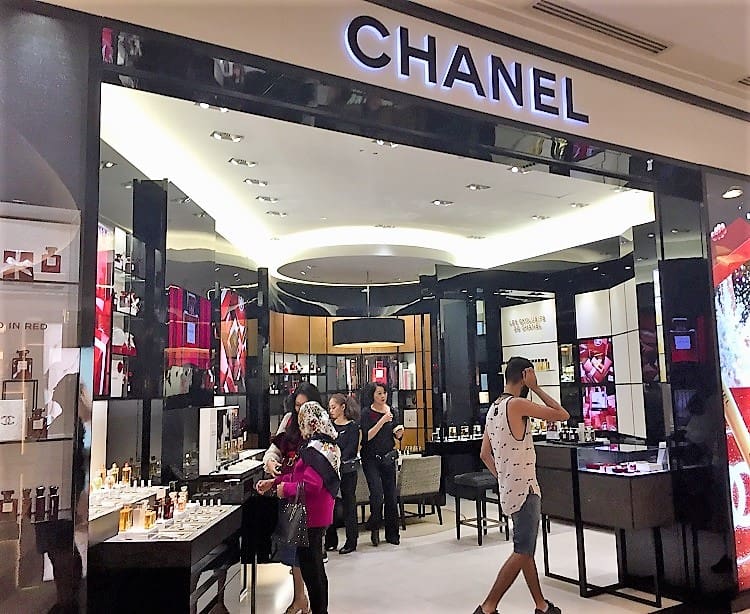
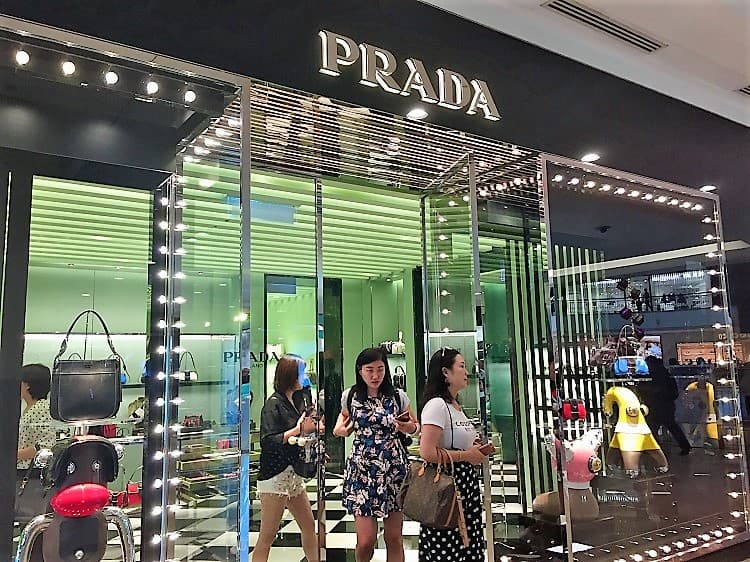
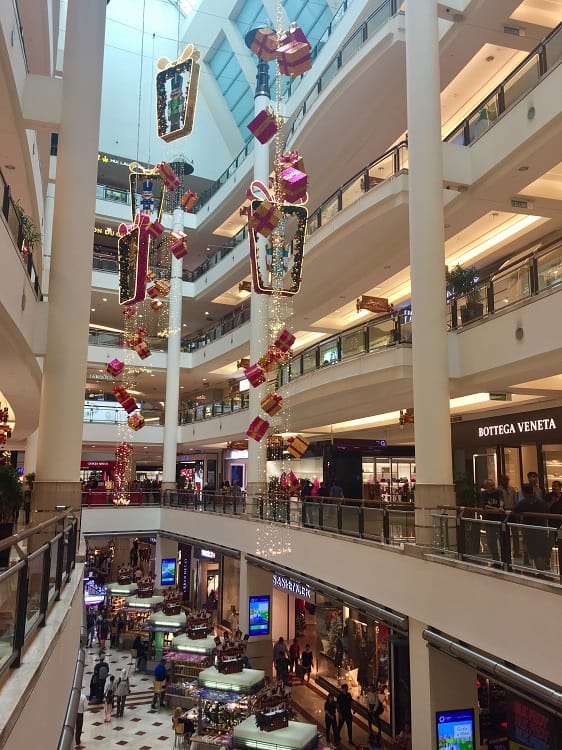
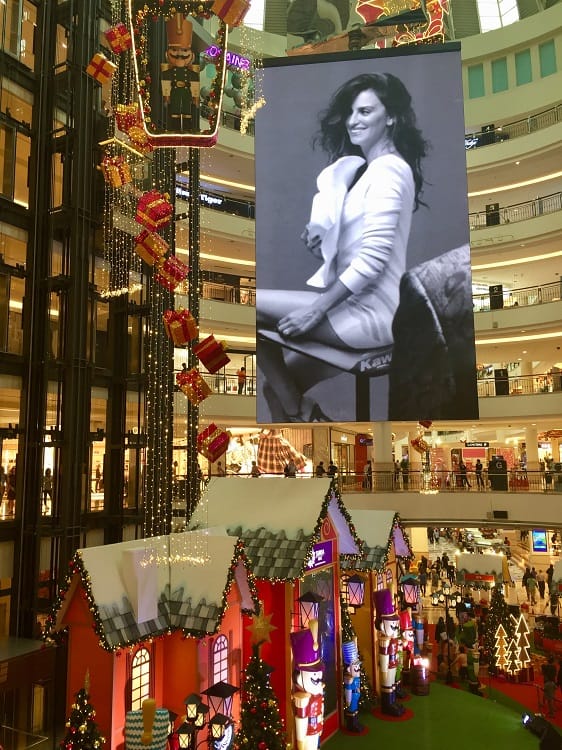
I’ve also noticed many stores are hiring in these modern meccas of activity. I frequently see signs posted in storefronts. I doubt the retail pay is great, but it probably is enough to make a living in Southeast Asia, which is less expensive to live than America. If all of these stores are hiring, they must be selling. I see some shoppers in the luxury stores, but more shoppers are in the mid-range stores. And it is Christmastime, so you’d expect malls to be more crowded and hiring sales people.
I went to a mall in the Bukint Bintang neighborhood in Kuala Lumpur one day to look around. I saw a crowd of people waiting in line to take pictures at a Mickey Mouse Christmas display. If you look closely at the pictures, you’ll see all the people at the display, and also pouring through the main entrance.
The thing is, malls here often look as crowded as this. I’ll make a logical leap that malls draw people year-round, since I’ve seen hardly any vacant storefronts.
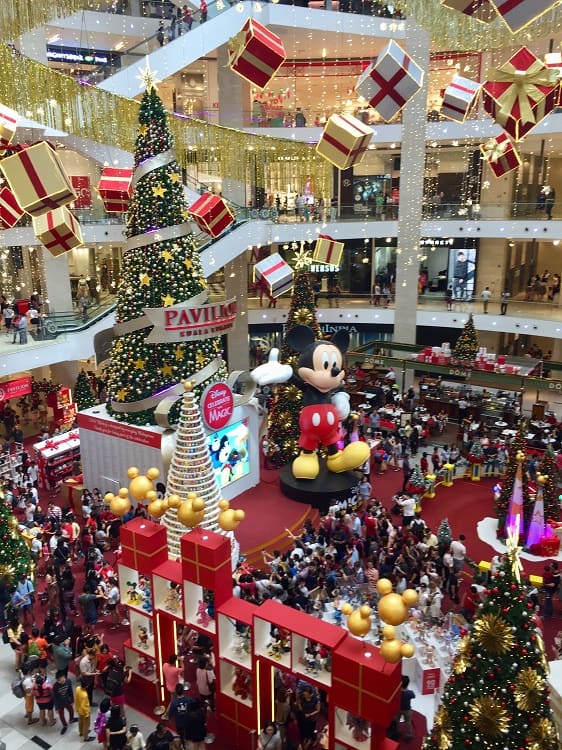
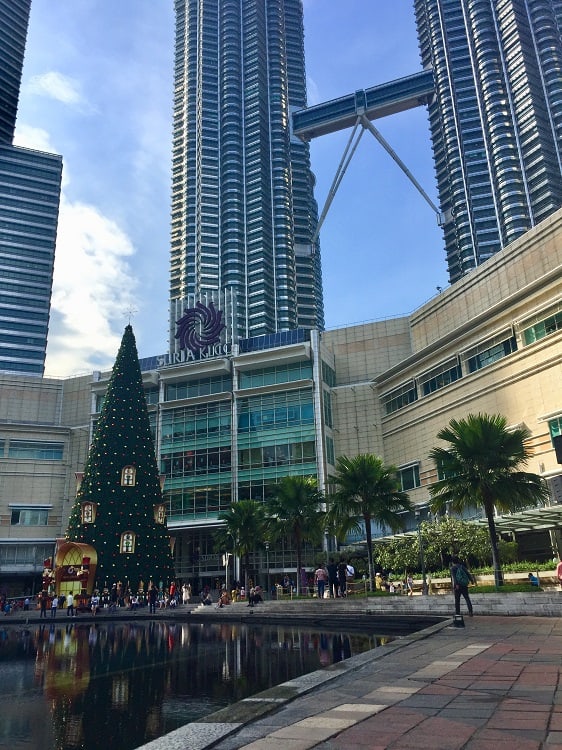
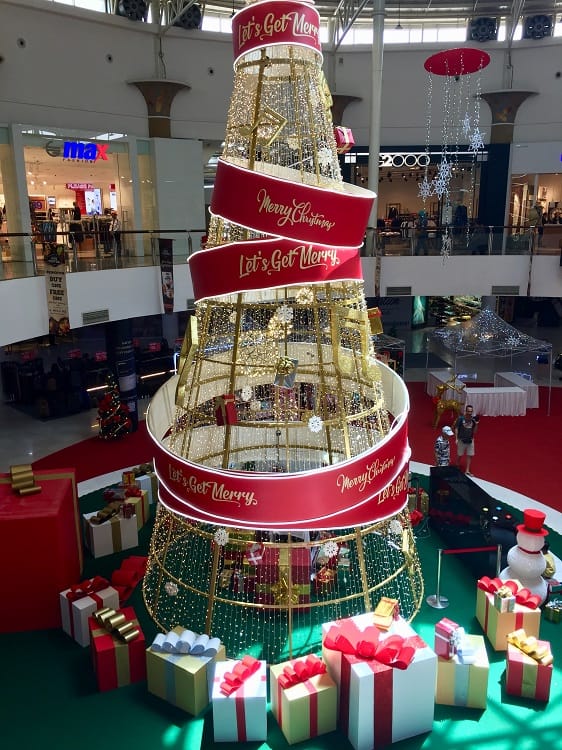
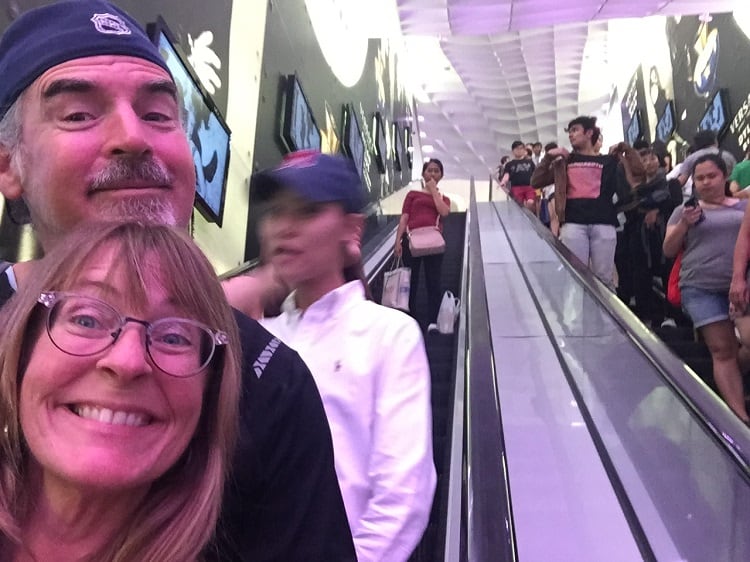
Culture watching in some Southeast Asian malls
I’ve applied some logic on why malls are so popular in this part of the world, and I have some possible explanations.
The malls are air conditioned. When it’s 95 degrees with 100 percent humidity and you walk into a mall, it’s like walking into an ice box. It feels amazing. (Especially for me. Hot flashes and equatorial tropics don’t mix too well.) In addition to protection from the equatorial sun, malls offer refuge from tropical downpours. That’s how I stayed dry once on a walk home.
Malls often are located in the bottom floors of high rise buildings in this part of the world. This generates rent, which possibly helps pay for the building’s construction.
Supermarkets often are located in mall basements in the cities, making it convenient to browse in a shop before stocking up on groceries.
Malls have large food courts with reasonably priced food in restaurants that are a few notches above street food. In one Singapore food court, it took us five minutes to find empty seats to sit down to eat! Does your local mall food court have standing room only?
And here’s another reason: tried and true simple marketing. Everyone wants to have more – everyone wants the good life. Everyone wants to consume what’s made to look good through advertising. It worked in America.
As early as November 11, Singapore malls already had decked the halls and erected Christmas trees. Malls in Malaysia also were filled with Christian holiday motif long before December, even though Christians are a minority.
Capitalist commercialization is everywhere
Yes, the commercialization of Christmas is alive and well in Singapore and Malaysia, as evidenced by digital billboards for brands that rent space in malls. We went to a “dollar” store for a bag of candy and shaving cream, and I turned around to see Tedly frowning in an aisle awash in consumerism waste.
Tedly and I were in a train station on our way to Batu Caves in Kuala Lumpur when we saw a line of 25 people waiting for an ice cream cone at a McDonald’s side counter. Tedly remarked every person on the planet wishes they could be on that line. How true that is.
Malaysia ranks 43rd in the world for average income, which is at $9,650 a year. Not every Malaysian is in a mall or on line at McDonald’s, but there certainly is evidence the country is chasing the good life – much like Americans seek the American Dream.
Malaysia’s skyline is filled with cranes, evidence of a building boom. Everywhere you look there is new construction going up all around Kuala Lumpur, and to a lesser extent in Melaka. That’s so unlike the U.S., where new construction of skyscrapers is novel in recent years. It’s as if the people of Malaysia are poised to realize a better life for its middle class. Life in Kuala Lumpur looks like the life Americans want: booming construction, bustling malls, rising incomes. How ironic.
I’m sure all of Southeast Asia doesn’t look like this – but I wonder how long before it will. As I see it, these malls are another reminder of how crowded the world has become, how much people want the good life, and how utterly unsustainable it all really is.
What can I do about any of it? Nothing, really. I haven’t contributed to the over-population problem, and I don’t buy unnecessary junk.
And so we enjoy the air-conditioned atmosphere as retired mall walkers — in some foreign malls. We buy only what we need; mostly we are culture watching. It’s fascinating.
🙂

